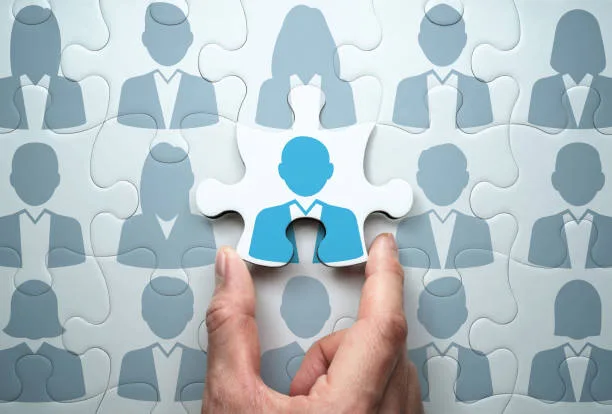In today’s world, companies are increasingly recognizing the importance of a well-executed onboarding process. However, it is crucial to grasp the meaning of onboarding and how its definition has evolved over time. In this guide, we will delve deeper into the concept of onboarding and its transformation, shedding light on why it plays such a role in ensuring business operations.
The Evolution of Onboarding Definition
The definition of onboarding has expanded over time to encompass a range of activities. Initially, it solely referred to integrating employees into an organization. However, as businesses started realizing the impact that effective onboarding has on employee engagement, productivity, and financial success, the definition began to broaden.
Today, industry experts and thought leaders define onboarding as a process that starts even before an employee joins an organization and continues throughout their tenure. It involves familiarizing employees with the company’s culture and values by providing training for job tasks and skills while fostering connections within the organization through networking opportunities and mentorship programs. All these efforts aim to empower individuals with the tools for long-term success.
Key Elements of a Modern Onboarding Process
To gain an understanding of how onboarding has evolved, let us explore some aspects of a modern onboarding process:
- Pre-boarding: Recognizing the importance of an onboarding process that begins before an employee sets foot in the office or starts working remotely, organizations now proactively engage with new hires during the pre-employment phase. This may involve sending packages or emails that provide an overview of what they can expect during their days and weeks at work.
- Orientation: Once new employees arrive at their workplace or start working, the focus shifts to orientation, which entails introducing them to the ins and outs of company culture. It often includes presentations by stakeholders or HR representatives who emphasize the company’s mission statements, values, and expectations.
- Training: An integral part of onboarding is equipping employees with the skills and knowledge to excel in their roles. This can be accomplished through a combination of training sessions, shadowing colleagues, or utilizing online learning platforms.
- Socialization: Companies understand the significance of integrating hires into their work environment to ensure job satisfaction and long-term retention. By implementing activities like team-building exercises, mentorship programs, and networking events, organizations create a workplace where employees feel valued from the beginning.
Advantages of Effective Onboarding
Thorough and structured onboarding processes offer the following benefits for organizations:
- Increased Employee Engagement and Retention: Employees who receive orientation tend to be more engaged in their work. Engaged employees are generally happier and more productive.
- Better Retention: Employees who receive onboarding support tend to remain with the company for longer periods compared to those who do not.
- Enhanced Performance: Effective onboarding programs equip hires with the tools and resources to adapt quickly to their roles. This enables them to start strong and perform at levels of productivity, ultimately contributing to success.
- Nurturing Future Leaders: Successful onboarding goes beyond helping new hires acclimate initially; it also plays a role in developing leaders within the organization. Companies can foster relationships through mentorship programs. Cultivate talent by providing growth opportunities such as leadership positions or involvement in projects that facilitate career advancement.
- Recommended Practices for a Successful Onboarding Process
To ensure an effective onboarding experience for new hires, organizations should consider implementing the following practices:
- Clear Communication: Maintaining consistent communication is crucial from the moment an offer is extended. Keeping hires informed about steps, important paperwork requirements, and any pre-boarding activities they need to participate in helps set expectations and fosters a smooth transition.
- Personalized Welcome: New employees can feel valued by personalizing their onboarding experience based on their role, department, and individual needs. Assigning a buddy or mentor who can provide guidance and support during the day helps create an environment.
- Provide Adequate Resources: Ensuring that new hires have access to resources is essential for their integration into the company. This includes providing them with training materials, tools, and necessary information that will enable them to perform their job right from the start.
- Focus on Relationship-Building: To ensure that new employees can perform effectively in their roles, it is important to provide them with all the tools and resources. This includes granting access to required software, equipment, training materials, and contact information for team members.
- Evaluate and Adjust: One crucial aspect is building relationships. It is beneficial to create opportunities for hires to connect with colleagues at different levels within the organization. This can be achieved through team-building exercises or social events held both online and offline.
- Gather Feedback: Evaluating and making adjustments as needed is essential. Gathering feedback from employees and managers involved in the onboarding process allows organizations to continuously improve their induction programs based on real-time insights from those with experience.
By incorporating these practices into your organization’s onboarding process, you can ensure a smooth transition for new employees while promoting productivity, engagement, and long-term retention within your workforce.
Conclusion
As businesses increasingly understand the value of investing in an onboarding process, the definition of onboarding has expanded beyond integrating new employees into the organization. It now includes providing support throughout their tenure. By following practices such as communication, personalized welcomes focusing on relationship building, and continuous evaluation, your company can establish an effective and engaging onboarding program that sets new hires up for success right from day one.
Remember that a well-executed onboarding process benefits the employee and plays a crucial role in the overall success and expansion of your organization. Acknowledge the significance of having an onboarding system and enjoy the advantages it offers in terms of employee involvement, productivity, and retention.
Also Read:
BigCommerce Enterprise: Custom Solutions for Scaling Your Online Store



